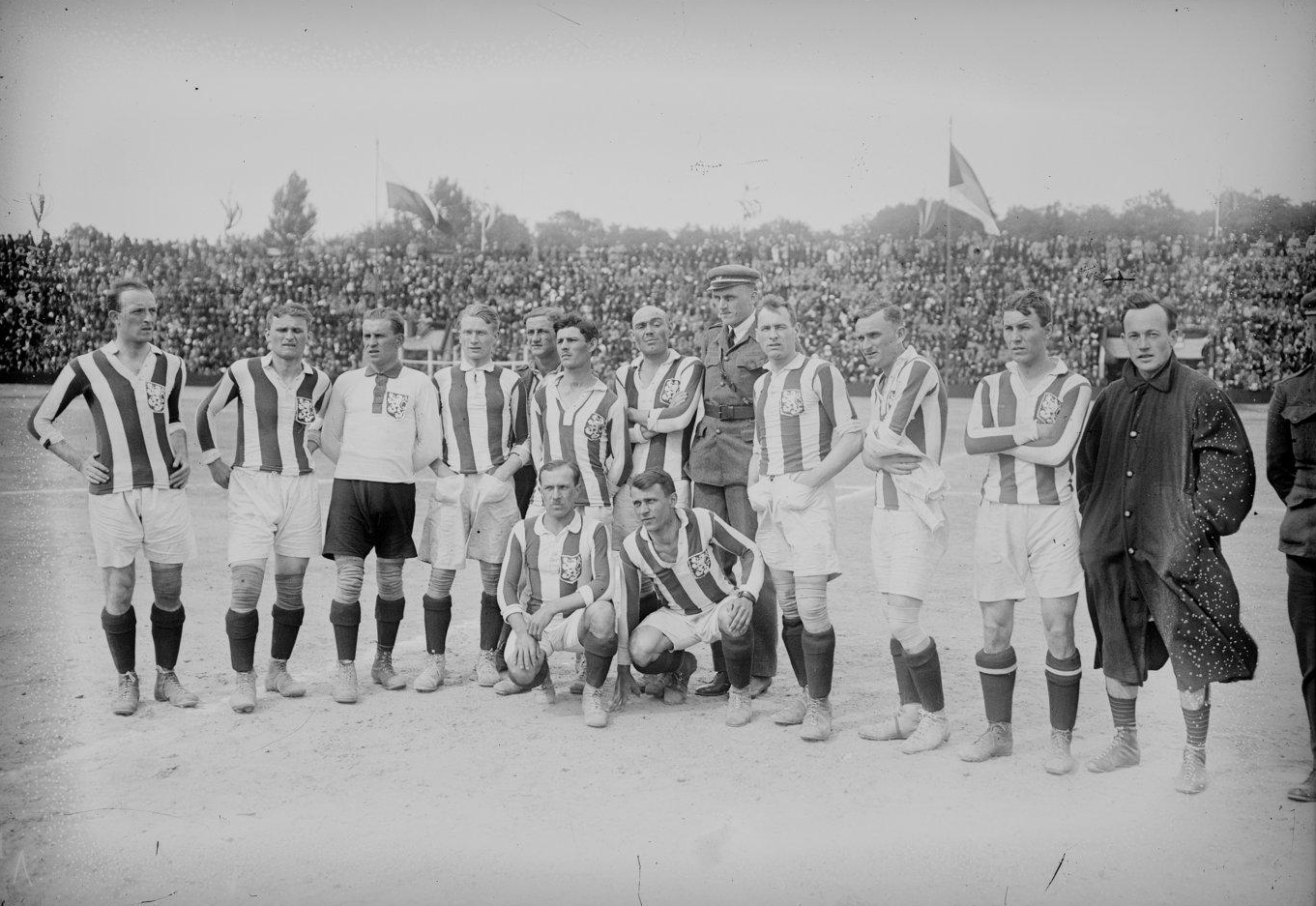
The Inter-Allied games was an athletic tournament organized by the United States military and the YMCA. The games were held in Paris from June 22 – July 6, 1919. One of the most popular events of the games was the eight-team soccer competition.
The nations were organized into two groups of four and the top team in each group competed in the final. One group contained the United States, Canada, Czechoslovakia and Belgium while the other consisted of France, Italy, Greece and Romania. Ultimately, Czechoslovakia and France met in the final and after a close match the Czechs took home the hardware winning 3-2. The performance of the United States team at the games was not the best as they won only a single game while finishing with a minus-12 goal difference. Still it could have been worse as Canada and Romania failed to win and Greece who also managed one victory conceded 15 more goals than they scored. In some ways though the U.S. team acquitted itself pretty well considering that the American Expeditionary Force seemed to give little attention to building the strongest possible squad. As I mention in this episode of the Soccer History USA podcast, the army was willing to return soldiers who had already been demobilized back to the U.S. when they thought it gave them the best chance to win an event. Such a policy did not seem to apply to soccer and instead most of the returned athletes competed in track and field events. In contrast to this approach other nations turned out strong teams featuring some of the continent’s top players.
Czechoslovakia
Participation in the Allied-Games represented the first major international sporting appearance for this newly created nation. Although because the matches played in Paris are not recognized by FIFA or the International Olympic Committee the country’s official debut would have to wait until the 1920 Olympics. The team that played in the Inter-Allied games was made up largely of players taken from the club Sparta Prague. Probably the top star of the side and one of the most notable players in the tournament was forward Antonín Janda. Nicknamed “Tank” because of his powerful and direct play, Janda began his career as a defender before moving to the attack. He was not blessed with great pace but played with deceptive quickness and had a powerful shot from distance. During the games he was one of the most popular players, especially with players from the US team. Janda had a large pumpkin shaped head (he’s in the center of the photo above, next to the soldier) and his left eye was permanently half-closed the supposed result of a kick to the face and he looked much older than he really was. At the conclusion of the final match, US soldiers hoisted him on their shoulders and carried him from the field. Later when arrangements were being made for Sparta to tour the United States in 1926, the terms of the contract reportedly stipulated that Janda be included in the team even though he had not featured regularly for Sparta in the past two seasons.
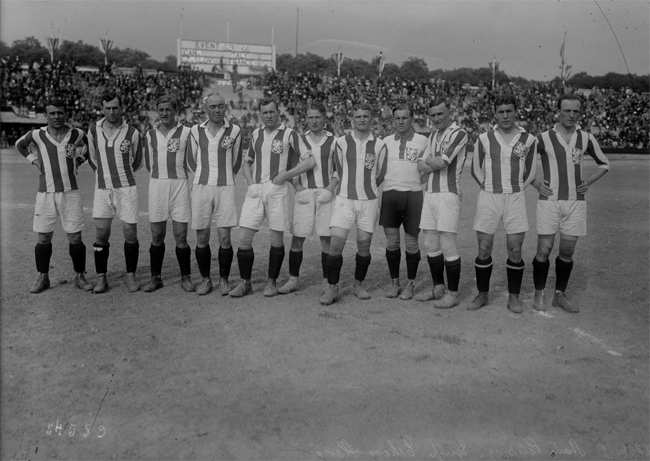
Janda was one of the stars of the Inter-Allied games but was probably even better at the 1920 Olympics where he scored hat tricks in two different games. The Czech team that reached the gold medal match (they forfeited in protest over the actions of the English referee) included thirteen players from the Inter-Allied roster, the most of any nation that competed in both tournaments. Other top Czech players who appeared in both the Inter-Allied games and the Olympics include defender Antonín Hojer and midfielder Václav Pilát. The coach of the Czech squad at both tournaments was former Celtic forward Johnny Madden. The riveter turned footballer won three championships with the Scottish club and after retiring as a player took up coaching at Slavia Prague.
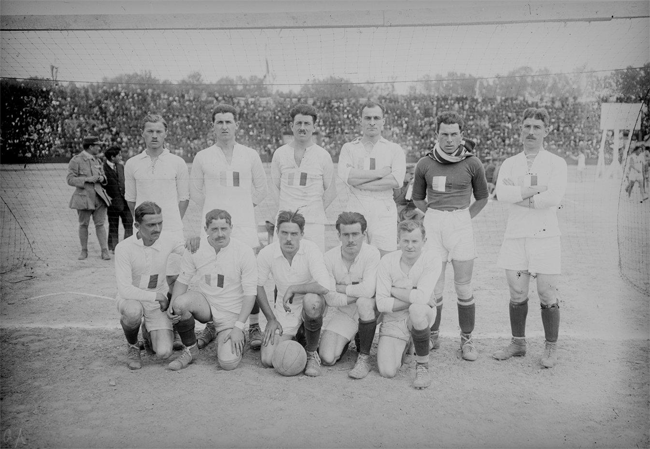
France
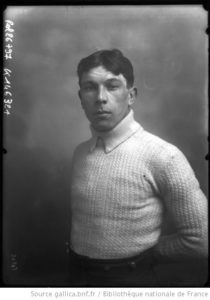
Going into World War I, soccer was not widely popular in France and was largely a game played by the urban middle classes. The experience of the war led to dramatic changes as the sport exploded in popularity leading to institutional reform and the emergence of a national football culture. Despite the fact that it had a limited following compared to other sports, notably rugby, the country still produced some remarkably talented players, many of whom appeared at the Inter-Allied games. The top French star of the tournament was goalie Pierre Chayriguès. Known as a sweeper keeper before such a term existed, Chayriguès was famous for his fearless style despite his relative small size. Unfortunately such play often resulted in serious injury and indeed some reports indicate that he broke his hip and pelvis during the Inter-Allied games final, although I could find no contemporary report that confirmed this. Regardless of whether or not it happened at the games, he was seriously injured at some point during 1919 and as result was unable to compete at the 1920 Olympics. A few years later he broke his leg and ankle in a collision and was forced to retire shortly afterwards. Both before and after the war Chayriguès turned out for Red Star AC where he won three straight French cups between 1921-23. Prior to the conflict he was known as one of the world’s top keepers and during a tour of England even turned down an offer from Tottenham Hotspur.
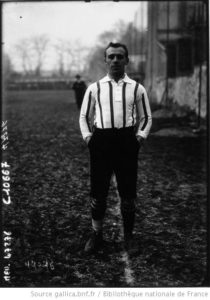
Midfielder François Hugues, was a superb athlete who commanded the center of the pitch for Red Star and the French national team. Although not technically gifted he played with a cool head and was strong in the air despite lacking stature. Another notable French player was Raymond Dubly who, like a few of his seven older brothers played club football with RC Roubaix. A superbly conditioned winger who relied on speed, Dubly scored 4 goals in 31 appearances for France and was one of the “Heroes of Pershing” who defeated England in 1921 on the same ground where he lost the Inter-Allied final. The captain for France that day was twenty-year old Lucien Gamblin, a teammate of Chayriguès and Hughes at Red Star and also a member of the 1919 Inter-Allied squad.
Other Nations
Due to an opening match loss to Czechoslovakia, Belgium did not reach the final of the Inter-Allied soccer championship. The squad did not lack for quality, however, and at least six players from the 1919 side helped the country win gold at the 1920 Olympics. Among the leading figures on both teams was Armand Swartenbroeks. Later known as the Red Doctor because of his medical degree and socialist politics, Swartenbroeks was the most capped player in Belgium during the 1910s and 1920s.
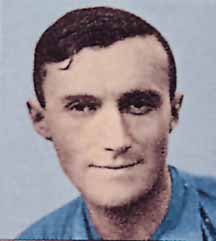
Before France’s match against Italy the newspaper L’Auto highlighted the speed and incisiveness of the Azzurri. The player who led the line for the Italians was Swiss-born forward Ermanno Aebi. At the age of 18 he joined Inter Milan where he spent his entire playing career and remains the club’s ninth all-time scorer having netted 106 goals in only 142 games. Despite the fact that he had Swiss citizenship Aebi volunteered for military service in Italy which explains his appearance at the Inter-Allied games. Also on the Italy squad was midfielder Renzo de Vecchi who made his debut for AC Milan in 1909 when he was just 15 years old. In appreciation of his divine skill, fans soon dubbed him Figlio di Dio – Son of God. Before the age of 20 he moved to Genoa for a then record fee and went on to make 171 appearances for the club, winning the scudetto in 1914-15 (the last before the war) and again in 1922-23 and 1923-24.
One of the players listed for the Greek team at the Inter-Allied games is identified in the official publication as “Andre Protopoulos.”
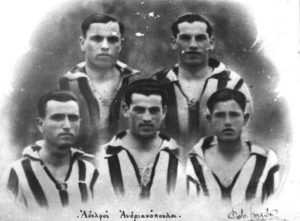
Given the books unfortunate habit of misspelling player names, even those in English, I believe this may be a corruption of the surname Andrianopoulos, one well known in Greek soccer history. Five brothers from the Andrianopoulos family played soccer and it was likely the oldest Yiannis who represented his nation in 1919. Yiannis would have been 18 or 19 during the games and while Giorgos was on the 1920 Olympic squad alongside his older brother, he would have been only 16 at the Inter-Allied tournament. In 1925 the Andrianopoulos brothers played a key role in the founding of Olympiacos F. C. with Yiannis serving as player, manager and eventually team president.
A detailed discussion of the Romanian team is available here.
Inter-Allied Games Results
| June 24, 1919 | France 4 Romania 0 Czechoslovakia 4 Belgium 1 |
| June 25, 1919 | Italy 9 Greece 0 United States 5 Canada 4 |
| June 26, 1919 | France 11 Greece 0 Czechoslovakia 8 United States 2 Italy 7 Romania 1 Belgium 5 Canada 2 |
| June 28, 1919 | Greece 5 Romania 2 Belgium 7 United States 0 France 2 Italy 0 Czechoslovakia 3 Canada 2 |
| June 29, 1919 | Czechoslovakia 3 France 2 |
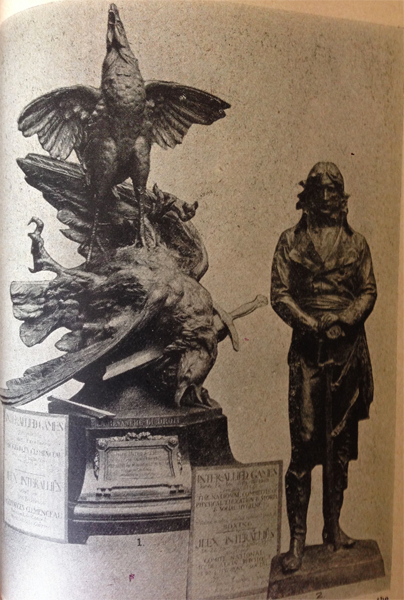
A version of this essay was first published at www.SoccerHistoryUSA.org in June 2014 and updated November 2018.

Pingback: Soccer at the Inter-Allied Games of 1919: The United States – Society for American Soccer History